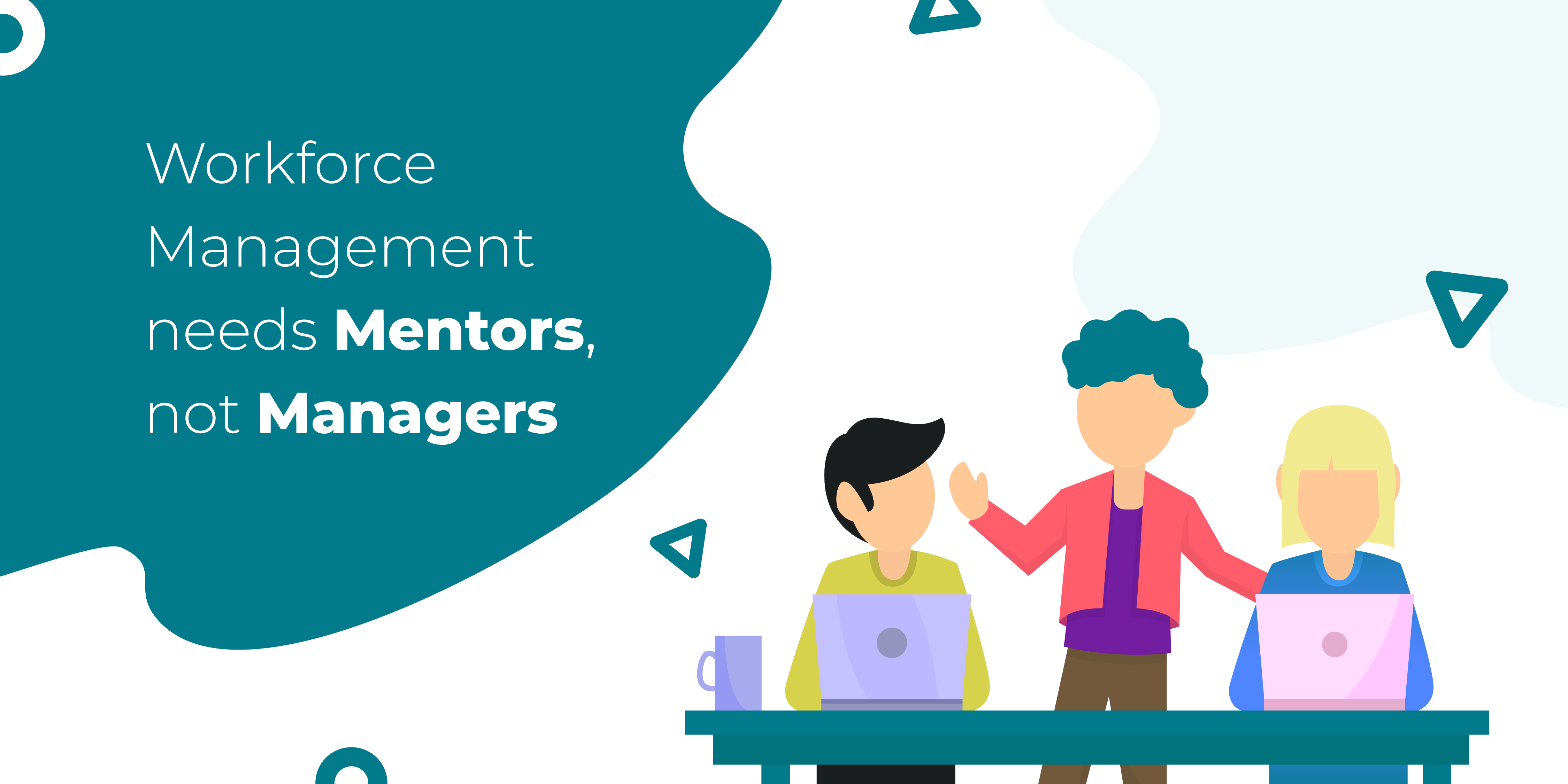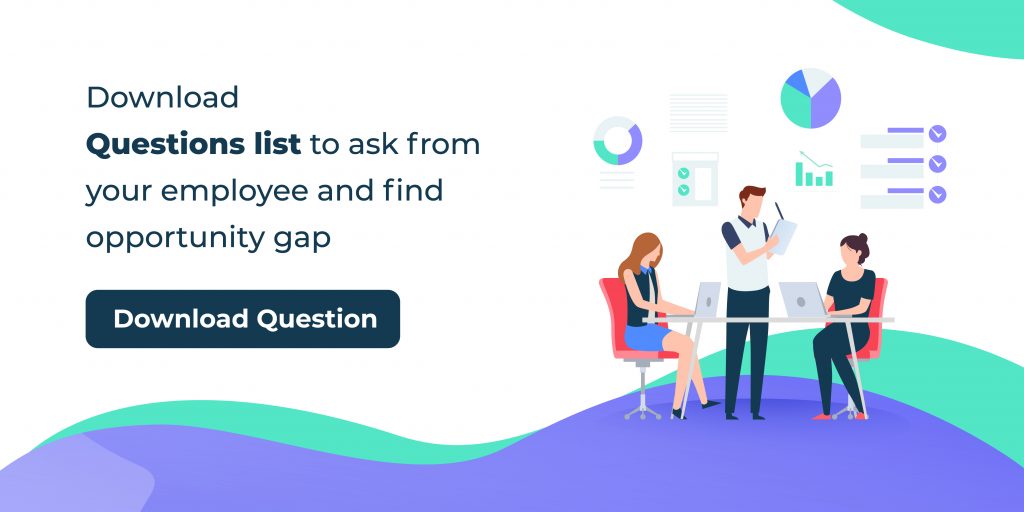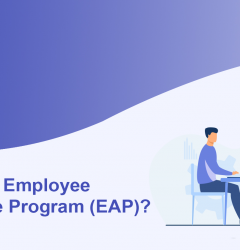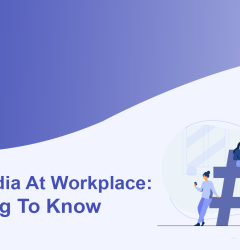01 Sep

Workforce management is a challenge for small and medium businesses. The business works on a target along with a skilled team under a strong vision and mission. Did you ever find any employee working peacefully under pressure?
The current millennial workforce dreams of working for an organization that is referred to as “best place to work at”. If we talk alone about the United States, it makes more than 75% of the workforce by 2025 in millennials. Isn’t that big number to ponder upon?
Well, we know how the workforce challenges can impact workflows. The highly skilled managers are responsible for maintaining the diaspora of healthy workforce management but are they good at mentorship? Can a manager be a good mentor as well? Let us look for more in this concern into workforce management
Table of Contents
What is the difference between a Manager and Mentor when we talk about workforce management?
An employee looks for mentorship to resolve their challenges. Here is a point where he looks around an option to identify a mentor among his colleagues or a manager. Every organization follows a mentoring program to improve their retentivity among its millennial workforce.
Mentorship results in higher employee engagement and productivity. Your employee will always look out for the best person to guide them. It can be any eligible person for him that guides him to his endpoints. Below are a few points that can ideally create the perfect difference.

| Managers | Mentors |
| A manager’s goal is to meet the target and goals. Their decisions are aligned with the Organization’s business requirements. | A mentor vision is to build healthy mentor-mentee relations. They are more aligned with career growth and knowledge sharing. |
| The manager-employee can be focused more on workforce management that can be learning restricted. | A mentor will always promote learning new avenues that can improve skills in career growth and aspirations. |
| A manager is an authoritative icon of the team. He is more responsible for feedbacks, reviews, and performance. | A mentor is usually a guiding figure. His feedbacks and reviews aren’t responsible or affecting performances. |
| Employee connects with managers are formal. When an escalation is raised from employee ends, for example, being harassed by coworker get escalated straight to the manager. | Mentor connects with an employee is casual. The problems that an employee discuss with a mentor are at personal level and doesn’t get any escalations from any end. |
Workforce management by a manager who has a mentoring quality can have collective benefits of all the difference mentioned above. Can imagine the kind of work culture you will have? Do let us know about your imaginations in the comment below.
How is workforce management done in top companies?
Top companies are reaching to epitome because of their great employee policies. It is because of the mentorship that they follow in their workplaces. These companies have managers who believe in mentorship while they are managing the workforce.
How does management go hand in hand with mentorship? Isn’t this question bulging in your brain?
Well, top companies are at the tip because they know how to get the work done. When you expect quality work, you need to shed out quality perks to the employees too which is beneficial for them both long and short term.
Google, one the best-known company for its work culture has a framework for mentoring their employee. It uses institutional measures for developing the desired cultural strengths. Their managers use mentorship programmes like
- Training workforce: on technologies that can improve the quality of development.
- Personalized leadership programmes: framed to boost innovation and maintain creativity.
- Extensive management support: Provided by managers to encourage an employee to accept new challenges.
This big B’s does not only focus on providing mentorship to their employees but also extend the same to new emerging startups. 2018, Google launched a mentorship programme in India named “Solve For India“.
If you have a large, intelligent workforce then focusing on mentorship via manager is the best plan to build a productive work culture. A secret that top companies are using to improve their businesses.
How managers can mentor their team?
When we talk about mentorship for a team, it can be well executed by managers itself. How?
Managers are the best person to connect with employees. They connect with them personally. The managers are the observer for any workforce management system.
A good manager is very predictive in his job. He can forecast from the workforce management tools list, the occurrence of an event. So, the best person to trigger the mentorship is the manager itself but how can these managers, provide mentorship?
A skilled manager can be the best in the league to guide and provide support to their teammates. He can follow these golden rules to be a good mentor along with a great manager:
- They can create trust and understanding with their team.
- Getting a back to employees.
- Giving opportunities to grow and Innovate.
Creating Everlasting Trust
A manager portraits an authoritative role in a team. It is a very crucial situation for them to be a manager along with a mentor. A mentor connects more easily to employees than a manager. So, how to create trust while being in an authoritative role?
Trust starts with trustworthy leadership. It must be built into the corporate culture.
Barbara Kimmel, a reputed author, a leader at trustacrossamarica.com
Obviously, a manager has to be a trustworthy leader. Nobody wants to discuss their shortcomings or unskilled abilities with their boss. A trustworthy bond will help the disclosure of such lack of ability. There is a very simple impression that manager has to inculcate in his rule.
If an employee wants to get frank with their manager then they should manage such gesture with integrity. The employee’s frankness must be encouraged instead of penalizing them. This will help a manager to create a working decorum where any possibility of underperformance will be reduced.
Supportiveness culture and behavior
Getting a talent on board for a hardworking team is HR’s job but to improve the performance of a team is the responsibility of a manager. Only quality check at work metrics won’t improve the production quality. Here comes the role of a supportive manager with a mentor trait in his leadership. How can good support improve productivity and quality?
A manager can support their employee as a backup. This means they should be at the back of their employee while they make decisions about getting a transformation in their workflow, services, product. A change is important to display improvement in the outputs but it can be only possible if an employee gets the leverage of managers support.
Creating opportunities for growth
According to a report published in SHRM {Society for human resource management }, it states that “56% of employees feel their manager has good knowledge of what they do and promotes the use of their unique talents”
This is half of the total percentage. Can you imagine the potential that is untapped by workforce management? So how do you create opportunities for an employee while mentoring them?
It can happen when a mentor talks to their employee and Digg their requirements through friendly cross-questioning. These questions can be like
- At work, do you have the opportunity to do what you do best every day?
- Does the mission/purpose of your company make you feel your job is important?
- In the past year, have you had opportunities at work to learn and grow?
Some of these relevant questions can help you analyze the kind of opportunity that your employee is looking for.

Formal and Informal Mentorship. Which is more effective?
We are talking about how can a manager become a good mentor as well. While we have an immense number of mentorship plan designed for the workforce management but these plans have certain shortcomings too.
A mentorship plan can be either a formal or informal mentoring programme.
An informal mentorship grows out of a friendly relationship between a mentor and an employee. In this case, they share a common interest and work prospectives. In contrast, a formal mentorship is between two organizational members. This doesn’t involve any friendly communication and made randomly or assigned by a committee.
Comparing the two grounds of mentorship, it is a call from the manager’s end to follow their mentorship programme. We studied a research journal “A Comparison of Informal Mentoring Relationships and Formal Mentorship Programs.” by Chao, Georgia T.; And Others. It was done on Michigan state university alumni who were working in good working positions.
The result showed that “informal proteges reported a mean of 13.6 hours per week with their mentor and formal proteges reported only 2.9 hours per week.”
This result gives a clear answer about the manager and mentor gap that can add or dilute a productive workspace. Most of the manager follows a formal mentorship programme which results in less connectivity. Effective workforce management can be archived with a manager who can practice an informal mentorship with their team.
Conclusion
Workforce management can be frictionless with a mentor handling it. Instead of having a controlling attitude, it should be more collaborative. Building a bond, sharing a common interest and perspective can create a healthy work culture. Making an employee guilty about their work before leaving work can impact the rest of the workforce as well. Healthy workforce management can be archived where results are considered over counting the ways of archiving it. This freedom of getting results can keep both the company as well as the workforce into a better frame of scaling the company’s productivity, utilization, and quality.













Snehil Prakash